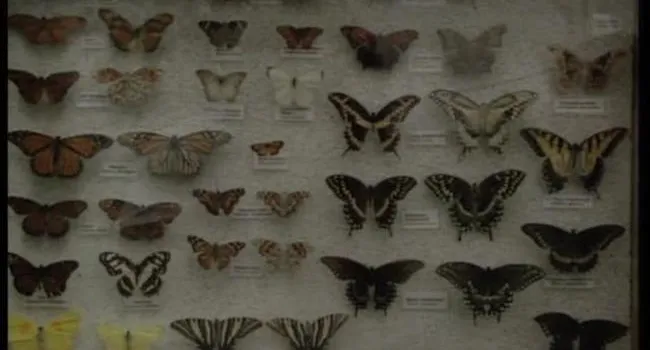A marine artificial reef is an added substrate positioned on a flat, featureless, sandy ocean bottom. The reef is totally natural, with the exception of the structure on which it grows. Natural reefs occur on rocky outcroppings, such as limestone ledges, and are found in small areas. Artificial reefs are created using recycled sunken ships, barges, boats, and bridges. Marine organisms attach to the structures and, after a few years, it is hard to tell the difference between a natural and an artificial reef.
The South Carolina Department of Natural Resources began its active reef program in 1973, and it now monitors 42 reef sites. These sites, which are located in waters from 9 to 110 feet deep, can be in estuarine conditions or 32 miles offshore. Recreational fishermen and divers are the primary users of the reefs. Permits granting the use of reefs are offered by DNR.
DNR selects the sites and materials for new reefs. Designed habitat structures, also called reef balls, are made of steel, concrete, or plastic. These reefs are buoyed and often monitored by side-scan sonar. Sonar is also used to choose areas and to keep track of materials.
ROV is a camera in a box with a motor. With a 500-foot-depth capability, the robot camera can go deeper, and in colder waters, than a human diver. Scuba is the other main means of diving, which is used by four DNR divers to look at the reefs up close.
Special programs are hosted by DNR. For more information, call 1-800-762- 5000.
Standards
- 3.2.2.ER Identify and analyze the ways people interact with the physical environment in different regions of the state, the country, and the world.
- Life Science: Environments and Habitats
- 3.L.5 The student will demonstrate an understanding of how the characteristics and changes in environments and habitats affect the diversity of organisms.
- 3.L.5A The characteristics of an environment (including physical characteristics, temperature, availability of resources, or the kinds and numbers of organisms present) influence the diversity of organisms that live there. Organisms can survive only in...
- 3.L.5B When the environment or habitat changes, some plants and animals survive and reproduce, some move to new locations, and some die. Fossils can be used to infer characteristics of environments from long ago.
- 3.L.5 The student will demonstrate an understanding of how the characteristics and changes in environments and habitats affect the diversity of organisms.
- Earth Science: Changes in Landforms and Oceans
- 5.E.3 The student will demonstrate an understanding of how natural processes and human activities affect the features of Earth’s landforms and oceans.
- 5.E.3A Some of the land on Earth is located above water and some is located below the oceans. The downhill movement of water as it flows to the ocean shapes the appearance of the land. There are patterns in the location and structure of landforms found...
- 5.E.3B Earth’s oceans and landforms can be affected by natural processes in various ways. Humans cannot eliminate natural hazards caused by these processes but can take steps to reduce their impacts. Human activities can affect the land and ocean...
- 5.E.3B.2 Develop and use models to explain the effect of the movement of ocean water (including waves, currents, and tides) on the ocean shore zone (including beaches, barrier islands, estuaries, and inlets).
- 5.E.3B.3 Construct scientific arguments to support claims that human activities (such as conservation efforts or pollution) affect the land and oceans of Earth.
- 5.E.3B.4 Define problems caused by natural processes or human activities and test possible solutions to reduce the impact on landforms and the ocean shore zone.
- 5.E.3 The student will demonstrate an understanding of how natural processes and human activities affect the features of Earth’s landforms and oceans.
- Ecology: Interactions of Living Systems and the Environment
- 7.EC.5 The student will demonstrate an understanding of how organisms interact with and respond to the biotic and abiotic components of their environments.
- 7.EC.5A In all ecosystems, organisms and populations of organisms depend on their environmental interactions with other living things (biotic factors) and with physical (abiotic) factors (such as light, temperature, water, or soil quality). Disruptions...
- 7.EC.5A.1 Develop and use models to describe the characteristics of the levels of organization within ecosystems (including species, populations, communities, ecosystems, and biomes).
- 7.EC.5A.3 Analyze and interpret data to predict changes in the number of organisms within a population when certain changes occur to the physical environment (such as changes due to natural hazards or limiting factors).
- 7.EC.5B Organisms in all ecosystems interact with and depend up on each other. Organisms with similar needs compete for limited resources. Food webs and energy pyramids are models that demonstrate how energy is transferred within an ecosystem.
- 7.EC.5B.3 Analyze and interpret data to predict how changes in the number of organisms of one species affects the balance of an ecosystem.
- 7.EC.5B.4 Define problems caused by the introduction of a new species in an environment and design devices or solutions to minimize the impact(s) to the balance of an ecosystem.
- 7.EC.5A In all ecosystems, organisms and populations of organisms depend on their environmental interactions with other living things (biotic factors) and with physical (abiotic) factors (such as light, temperature, water, or soil quality). Disruptions...
- 7.EC.5 The student will demonstrate an understanding of how organisms interact with and respond to the biotic and abiotic components of their environments.



































